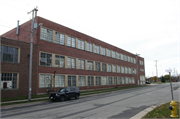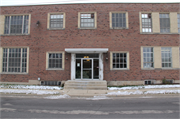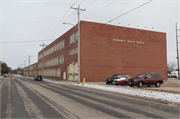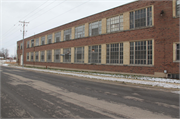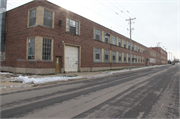Property Record
820 E WISCONSIN ST
Architecture and History Inventory
| Historic Name: | George W. Borg Corporation |
|---|---|
| Other Name: | Thomas B. Gibbs Co. Division/Borg Fabric Division |
| Contributing: | |
| Reference Number: | 233111 |
| Location (Address): | 820 E WISCONSIN ST |
|---|---|
| County: | Walworth |
| City: | Delavan |
| Township/Village: | |
| Unincorporated Community: | |
| Town: | |
| Range: | |
| Direction: | |
| Section: | |
| Quarter Section: | |
| Quarter/Quarter Section: |
| Year Built: | 1943 |
|---|---|
| Additions: | 1956 |
| Survey Date: | 2016 |
| Historic Use: | industrial bldg/manufacturing facility |
| Architectural Style: | Contemporary |
| Structural System: | |
| Wall Material: | Brick |
| Architect: | Holsman & Holsman (Chicago) 1943 building; John J. Flad & Associates (Madison) 1956 addition |
| Other Buildings On Site: | |
| Demolished?: | No |
| Demolished Date: |
| National/State Register Listing Name: | Borg, George W., Corporation |
|---|---|
| National Register Listing Date: | 2/6/2020 |
| State Register Listing Date: | 11/22/2019 |
| National Register Multiple Property Name: |
| Additional Information: | T. S. Willis of Janesville was contractor for both original building and addition. The George W. Borg Corporation is significant under Criterion A: Industry for its innovations and contributions in the field of mechanical devices and the field of textiles; specifically, pile fabrics. Constructed in 1943 for the Borg Corporation’s Thomas B. Gibbs Company Division, the building was used as a manufacturing facility to fulfill government contracts for war materiel during World War II. Products included mechanical time fuzes for anti-aircraft shells for which the Gibbs Division developed a machine to manufacture adjusting nuts that increased the rate of fuze production. Following the war, the George W. Borg Corporation received commendations from United States Navy and Army ordnance officials for their contributions to fuze development. The subject building also reflects the expansion of the nation’s workforce during World War II when the Borg Corporation recruited and employed significant numbers of women within the Thomas B. Gibbs Company Division. Following the war, the newly created Borg Fabric Division occupied the building and its success led to the construction of a three-story addition in 1956. Investing significant sums of capital and resources for research and development, the Borg Fabric Division made advancements in the production of knitted pile fabrics using synthetic fibers. Although also used for home furnishing and industrial applications, the majority of Borg’s deep-pile fabric production was intended for the apparel industry; specifically, the area of fur-like garments and similar uses including linings and coat trim. The George W. Borg Corporation is credited as a pioneer in the field of pile fabrics by its competitors within the industry. An innovator in pile fabric production, Borg Corporation received numerous patents for their equipment, fabrics and associated process of manufacture throughout the 1950s and 1960s when the industry rapidly grew. Among these was a patent issued in 1955 for their trademark Borgana fabric. During the period of significance (1943-1969), the Borg Fabric Division operated both day and night shifts in the subject building at a time when the George W. Borg Corporation was the largest employer within the City of Delavan. |
|---|---|
| Bibliographic References: |
| Wisconsin Architecture and History Inventory, State Historic Preservation Office, Wisconsin Historical Society, Madison, Wisconsin |

